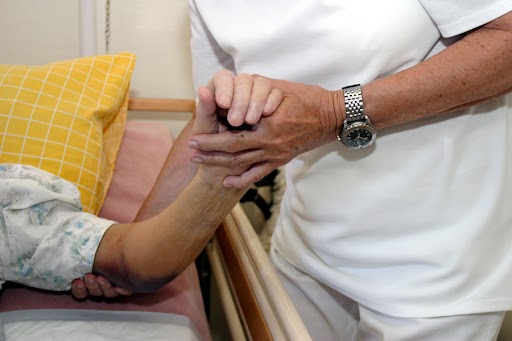
What are Pressure Ulcers?
Pressure ulcers are also called bedsores or pressure sores. They can form when your skin and soft tissue press against a harder surface, such as a chair or bed for a prolonged time. This pressure reduces blood supply to that area. Lack of blood supply can cause the skin tissue in this area to become damaged or die. When this happens, a pressure ulcer may form.
You have a risk of developing a pressure ulcer if you:
- Spend most of your day in a bed or a chair with minimal movement
- Are overweight or underweight
- Are not able to control your bowels or bladder
- Have decreased feeling in an area of your body
- Spend a lot of time in one position
Elderly people and those people who are bed-bound are most at risk of this condition. People who have a spinal cord injury or another neurological condition which affects movement and sensation are also at increased risk. People with conditions which affect blood circulation, such as diabetes or chronic venous insufficiency may also develop pressure sores more easily.
Pressure Ulcer Symptoms
Typical symptoms include red or purple skin in the affected area, skin that is softer and thinner than the surrounding skin, a break in the skin, and an open sore with a wide base. These tend to occur in bony areas, such as:
Tailbone, butt, heels, ankles, hips, back, elbows, shoulder blades, or back of the head
There may be pain in the affected area if the affected person does not have a loss of feeling which has contributed to the formation of the sore. If there is an infection, there may be pus in the sore, or it may have an unpleasant smell.
Stages of Pressure Ulcer Development
Stage 1
This is the mildest stage. These pressure sores only affect the upper layer of your skin.
Symptoms: pain, burning, or itching are common symptoms. The spot may also feel different from the surrounding skin. Firmer or softer, warmer or cooler.
Stage 2
This happens when the sore digs deeper below the surface of your skin.
Symptoms: your skin is broken, leaves an open wound, or looks like a pus-filled blister. The area is swollen, warm, and/or red. The sore may ooze fluid or pus. And it’s painful.
Stage 3
These sores have gone through the second layer of skin into the fat tissue.
Symptoms: the sore looks like a crater and may have a bad odor. It may show signs of infection: red edges, pus, odor, heat, and/or drainage. The tissue in or around the sore is black if it has died.
Stage 4
These sores are the most serious. Some may even affect your muscles and ligaments.
Symptoms: the sore is deep and big. Skin has turned black and shows signs of infection, red edges, pus, odor, heat, and/or drainage. You may be able to see tendons, muscles, and bone.
Preventing Pressure Ulcers
Preventative strategies can help reduce the risk of bedsores. These include but are not limited to:
- Changing positions every 2 to 3 hours in bed or every 15 minutes in a wheelchair
- Reducing pressure on areas that may be susceptible to pressure ulcers by using:
- A special air or gel mattress
- Padding that protects bony areas, like the elbows or ankles
- A wheel chair cushion
- Skin care as recommended by your practitioner for incontinence
- Regularly checking for bedsores if you’re immobilized
For patients who meet certain criteria and have health insurance, insurers may cover preventive supplies.
